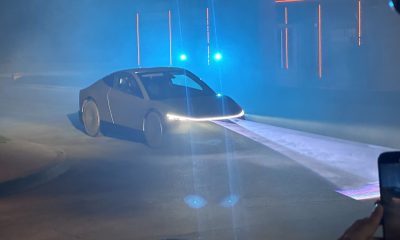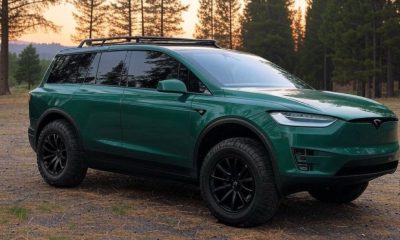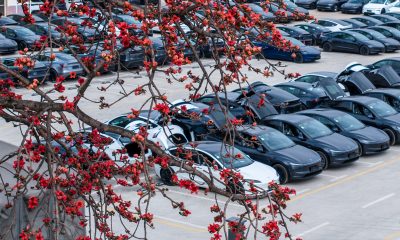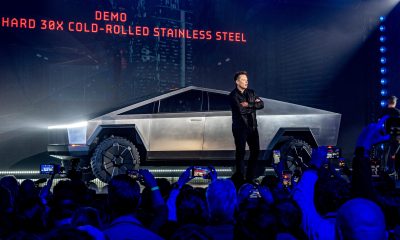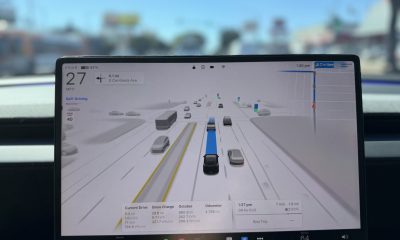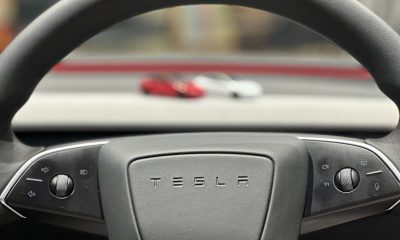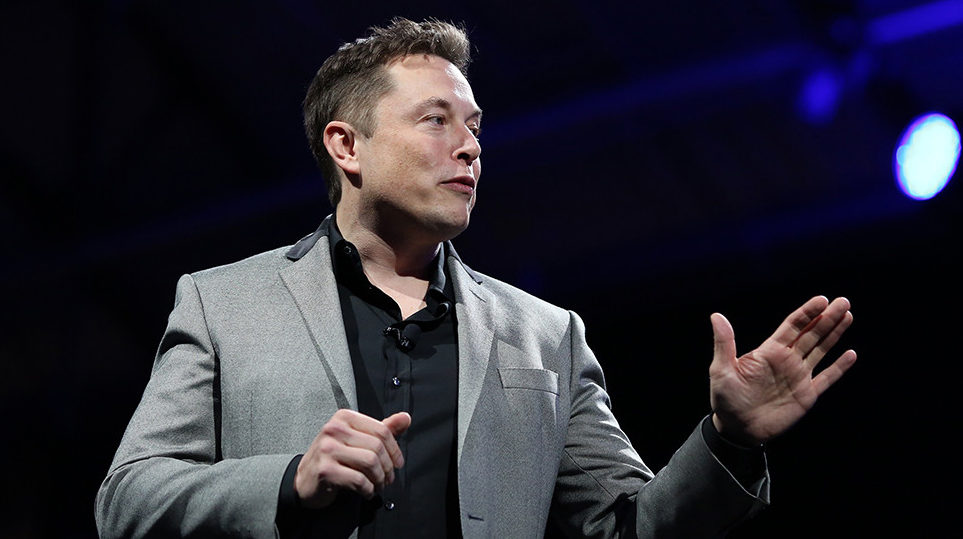
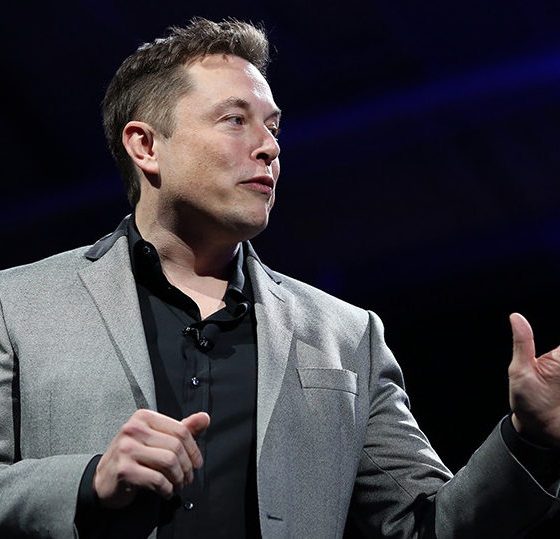
News
Tesla’s Elon Musk hailed as ‘Disruptor of the Year’ in Detroit, but Model 3 misses awards
Tesla might not be a participant in the North American International Auto Show on Monday, but Elon Musk’s presence could still be felt in the event. During the CNET Roadshow Shift Awards, Musk was named as “Disruptor of the Year,” beating out the CEOs of other companies such as McLaren Automotive and Bird, an electric scooter-share startup.
Chris Paukert, executive editor of the auto publication, noted that the Disruptor of the Year award is based on the person who caused the most ripples in the auto industry during the past year. In this sense, there is very little doubt that Musk was the definite choice, considering his well-publicized challenges and successes with the Model 3 ramp, as well as his daring, out-of-the-box strategies that ultimately brought Tesla into the green in Q3.
“This award is all about pushing the industry forward and leaving a lasting impact on the future of the automotive industry. Elon Musk fits that bill to a T. After smoothing out its production process, Tesla once again proved profitable. The Model 3 quickly launched itself to prominence in an already busy segment, and buyers themselves could feel the effects of those launches thanks to its wild Performance variant. Hell, he even made tunnels interesting,” CNET‘s Tim Stevens wrote.

While the auto publication granted Elon Musk an award, though, Tesla’s latest and most disruptive vehicle to date — the Model 3 — was strangely absent from the auto publication’s rankings. CNET Roadshow, for one, awarded the Genesis G70, a car that has received acclaim from critics and consumers alike, as Vehicle of the Year. Finalists for the award were the Jaguar I-Pace and Volvo S60/V60. The award for Cabin Tech of the Year was also granted to Audi’s MMI touch response system, with the finalists being Mercedes-Benz’ MBUX infotainment system and Ram’s Uconnect 12 technology.
That said, Tesla’s technology did make an appearance in the Roadshow Shift Awards’ other categories. Roadshow‘s Driveline Tech of the Year award, for one, was given to Nissan and Infiniti’s variable compression turbo, though finalists included Hyundai’s Kona electric powertrain and Tesla’s all-wheel-drive performance powertrain. Together with GM’s advance trailering system with apps, Tesla’s Navigate on Autopilot update was listed as a finalist in Safest Tech of the Year award as well. Audi’s drive-assistance package, though, ultimately bagged the award for Safety Tech of the Year.
The absence of the Model 3 in the CNET Roadshow Shift Awards is quite notable, considering that the electric sedan has received wide acclaim from professional reviewers, auto veterans like Sandy Munro, and owners alike. Tesla’s UI for its vehicles, which the company develops in-house, is also among the best in the market, with the system at times being compared to Apple’s iOS. As such, it is quite interesting to see Tesla be beaten by legacy auto in areas where it otherwise excels, such as cabin tech.

That said, it’s not like the Tesla Model 3 is being ignored by legacy auto either. Late last month, for example, 30-year auto news veteran and longtime car enthusiast Henry Payne dubbed the Tesla Model 3 as The Detroit News‘ 2018 Car of the Year. This was despite Payne only experiencing the capabilities of a Long Range RWD Model 3, a tamer version of the electric car compared to the range-topping, track-optimized Model 3 Performance. Following the Tesla Model 3 were the Ford Ranger and the Chevy Corvette ZR1, which were listed as the 2nd and 1st runner up for The Detroit News‘ 2018 Car of the Year award.
The past year has been notably impressive for the Model 3. Over 2018, 145,846 Model 3 were sold, despite Tesla being challenged with the electric sedan’s production during Q1 and Q2. With these sales figures, the Model 3 became the United States’ best-selling luxury vehicle, far overtaking its closest rival — the Lexus RX, which sold 111,641 in 2018. Tesla is not done, either, as the company intends to continue the electric sedan’s ramp all the way to 10,000 units per week.
It should be noted that the Model 3 has been showing these impressive numbers despite the vehicle only being available in the United States and Canada. This year, Tesla intends to bring the car to the international stage, starting with Europe and China, both of which represent a potentially lucrative market for the electric sedan. Tesla for one, is reportedly shipping 3,000 Model 3 per week to the European region starting in February. In China, Model 3 reservation holders who have configured their vehicles are expecting deliveries on March or April. By the end of the year, Tesla is set to roll out more affordable versions of the electric sedan to the local Chinese market, thanks to the vehicle production capabilities of Gigafactory 3.
News
Tesla Cybercab spotted testing on public roads for the first time
The car was spotted just minutes from Tesla’s Engineering Headquarters in Los Altos, California. There are a few interesting tidbits we can gather from the photo and the information shared with it.
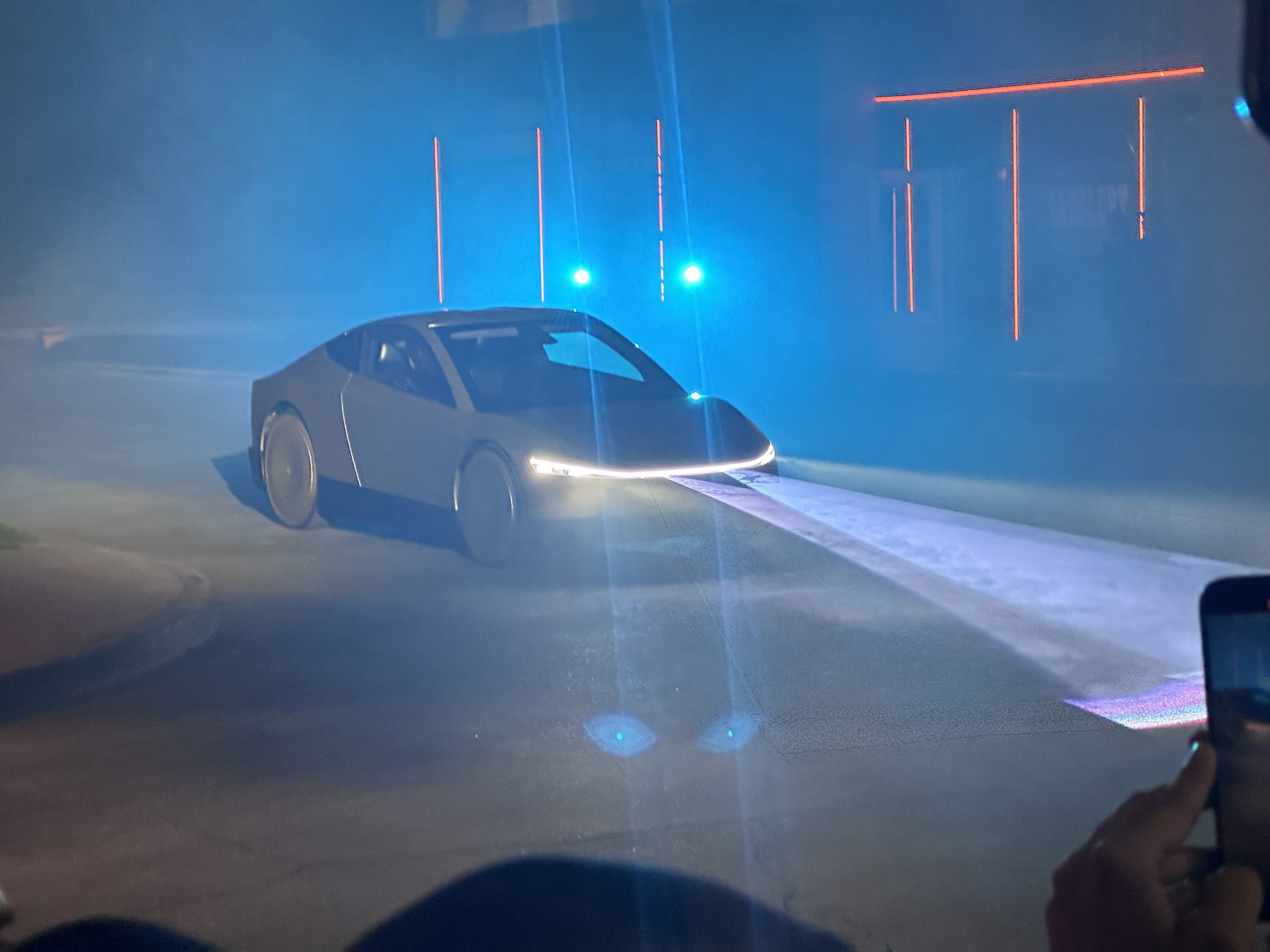
The Tesla Cybercab has been spotted testing on public roads for the first time, marking a substantial step forward in the vehicle’s development.
The car was spotted just minutes from Tesla’s Engineering Headquarters in Los Altos, California. There are a few interesting tidbits we can gather from the photo and the information shared with it:
BREAKING: Tesla’s Cybercab spotted testing on public roads for the first time!
This was in Los Altos, California, about 10 minutes from Tesla’s Engineering HQ. As would be expected at this stage, a person was in the driver seat.
The future is autonomous 🤖 pic.twitter.com/cvd6UrnKZo
— Sawyer Merritt (@SawyerMerritt) October 29, 2025
The vehicle had a driver and side view mirrors equipped on it, which seems to be pretty expected, especially at this stage.
Tesla might have been using its Full Self-Driving software with the vehicle as it enters this new stage of testing on public roads. This seems most likely, especially as the car, which has long been developed to be void of a steering wheel and pedals, will totally rely on autonomous tech to transport one or two passengers to their destination.
Additionally, side view mirrors are required by law at delivery, and Tesla was likely looking to keep things as safe and elementary as possible, especially with this early stage of testing.
As this is the first time the vehicle has been spotted on public roads and the first time it was likely testing on them, Tesla was being cautious.
There have been a lot of developments with Cybercab over the past few weeks, as the car has been spotted testing on the Fremont Factory’s test track, units have been seen outside of Gigafactory Texas’s crash testing facility, and there has been some additional speculation about what the vehicle’s standard equipment will be.
There have also been quite a few job postings by Tesla for manufacturing and production roles related to Cybercab over the past few weeks.
Yesterday, Tesla’s Board Chair, Robyn Denholm, revealed that the company could end up building Cybercab with a steering wheel and pedals, contrary to what Tesla and CEO Elon Musk have wanted to do.
The vehicle has yet to reach that stage of regulatory testing, but Tesla wants to start volume production in Q2. If it wants to release the vehicle without any manual controls, that means that Full Self-Driving will need to be completed within the next eight months.
News
Tesla hints it could see ‘a few more vehicles’ released soon
Denholm said on CNBC yesterday that “we do have a few other vehicles coming out.”
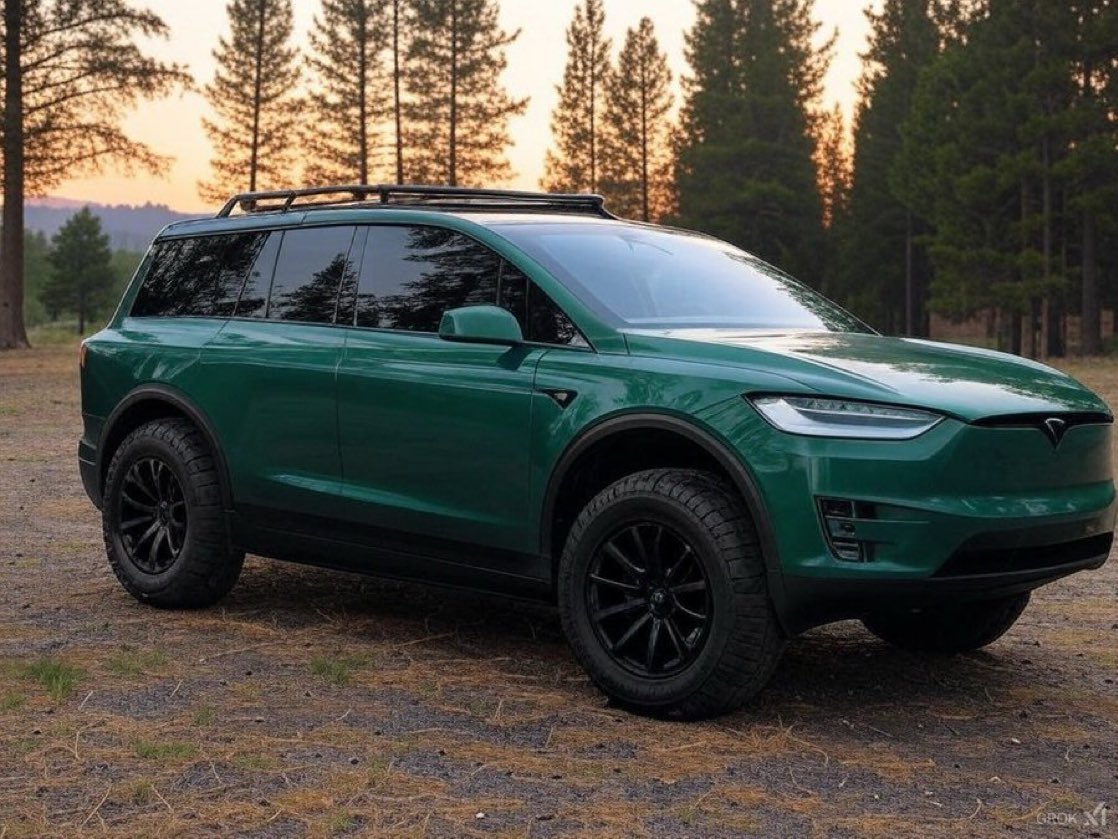
Tesla Board Chair Robyn Denholm hinted the company could see “a few more vehicles” coming out and being released soon, although there is no indication of what could be on the way based on her comments.
However, Tesla has hinted toward several potential releases in the coming years, as other executives, including Chief Designer Franz von Holzhausen, have talked briefly about what could be on the way.
Denholm said on CNBC yesterday that “we do have a few other vehicles coming out.”
BREAKING: $TSLA BOARD CHAIR ROBYN SAYS — “WE HAVE NEW VEHICLES COMING OUT” 👀
It’s happening ! pic.twitter.com/f8UuZWGLuP
— TheSonOfWalkley (@TheSonOfWalkley) October 27, 2025
It was a vague and almost cryptic sentence, as, in all honesty, it was not completely clear whether she was talking about recent releases that are just making their way to market, like the Model 3 and Model Y “Standard,” or new vehicles altogether.
Nevertheless, it’s worth dissecting.
Tesla “Standard” Models
On October 7, Tesla launched the Standard Model 3 and Model Y, stripped-down versions of their now “Premium” siblings. The Standard trims lack premium features like leather seats, a rear touchscreen, and a glass roof, among other features.
These cars are just starting to be delivered for the first time, so it is possible that Denholm was referring to these cars.
Potential Model 2 Hint?
There has always been a looming vehicle model that many Tesla fans and owners have been intrigued by: the Model 2.
This car was hinted at being the $25,000 model that Tesla was rumored to be developing, and many thought that was the vehicle that would be released earlier this month, not the Standard Model 3 and Model Y.
Instead, the Model 2 could be something that would enable Tesla to reach an entirely new consumer base, including those who are not able to swing the payment for the company’s more premium offerings.
It seems Tesla will have to launch some sort of extremely affordable model in the future, and with the Cybercab being slotted at that rough price point, it would not be out of the question for it to be in the realm of possibility for future releases.
It’s worth noting, however, that it is probably unlikely this will happen. Tesla is so deadset focused on autonomy, it seems Cybercab would take extreme precedence over the unconfirmed “Model 2.”
Cybertruck-inspired SUV
Tesla fans have been begging the company to develop a full-size SUV that would compete with the Ford Expedition or Chevrolet Tahoe, but the company has not given any indication that this would be something it would build.
Nevertheless, there was a very subtle hint in a recent promotional clip that showed a Cyber SUV mock-up placed strategically next to a clay model of a Model 3:
The Model X is simply not what people want when it comes to an SUV, as it does not have the seating capacity and cargo space that many need with a full-sized SUV.
This issue, in particular, has been one that has been extremely relevant to the company’s future lineup as consumers have shown they would be interested in a Tesla vehicle that fit this description.
Additionally, von Holzhausen said in September that a Cyber SUV or a smaller electric pickup with a more traditional design is “definitely things we’ve considered…We’re working on so many innovative and fun things.”
Tesla gives big hint that it will build Cyber SUV, smaller Cybertruck
Investor's Corner
Tesla enters new stability phase, firm upgrades and adjusts outlook
Dmitriy Pozdnyakov of Freedom Capital upgraded his outlook on Tesla shares from “Sell” to “Hold” on Wednesday, and increased the price target from $338 to $406.
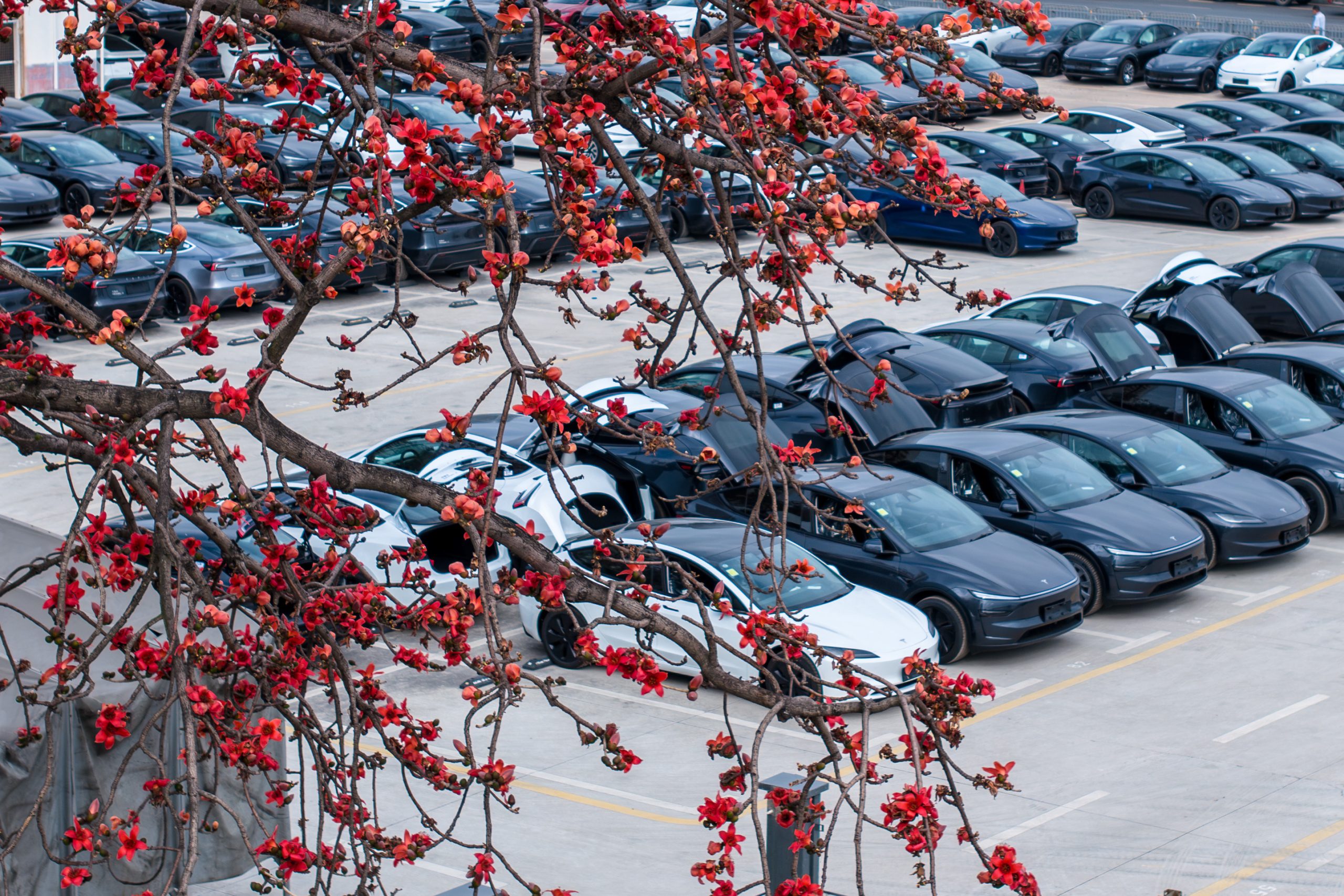
Tesla is entering a new phase of stability in terms of vehicle deliveries, one firm wrote in a new note during the final week of October, backing its position with an upgrade and price target increase on the stock.
Dmitriy Pozdnyakov of Freedom Capital upgraded his outlook on Tesla shares from “Sell” to “Hold” on Wednesday, and increased the price target from $338 to $406.
While most firms are interested in highlighting Tesla’s future growth, which will be catalyzed mostly by the advent of self-driving vehicles, autonomy, and the company’s all-in mentality on AI and robotics, Pozdnyakov is solely focusing on vehicle deliveries.
The analyst wrote in a note to investors that he believes Tesla’s updated vehicle lineup, which includes its new affordable “Standard” trims of the Model 3 and Model Y, is going to stabilize the company’s delivery volumes and return the company to annual growth.
Tesla launches two new affordable models with ‘Standard’ Model 3, Y offerings
Tesla launched the new affordable Model 3 and Model Y “Standard” trims on October 7, which introduced two stripped-down, less premium versions of the all-electric sedan and crossover.
They are both priced at under $40,000, with the Model 3 at $37,990 and the Model Y at $39,990, and while these prices may not necessarily be what consumers were expecting, they are well under what Kelley Blue Book said was the average new car transaction price for September, which swelled above $50,000.
Despite the rollout of these two new models, it is interesting to hear that a Wall Street firm would think that Tesla is going to return to more stable delivery figures and potentially enter a new growth phase.
Many Wall Street firms have been more focused on AI, Robotics, and Tesla’s self-driving project, which are the more prevalent things that will drive investor growth over the next few years.
Wedbush’s Dan Ives, for example, tends to focus on the company’s prowess in AI and self-driving. However, he did touch on vehicle deliveries in the coming years in a recent note.
Ives said in a note on October 2:
“While EV demand is expected to fall with the EV tax credit expiration, this was a great bounce-back quarter for TSLA to lay the groundwork for deliveries moving forward, but there is still work to do to gain further ground from a delivery perspective.”
Tesla has some things to figure out before it can truly consider guaranteed stability from a delivery standpoint. Initially, the next two quarters will be a crucial way to determine demand without the $7,500 EV tax credit. It will also begin to figure out if its new affordable models are attractive enough at their current price point to win over consumers.
-

 Elon Musk2 weeks ago
Elon Musk2 weeks agoSpaceX posts Starship booster feat that’s so nutty, it doesn’t even look real
-

 Elon Musk2 weeks ago
Elon Musk2 weeks agoTesla Full Self-Driving gets an offer to be insured for ‘almost free’
-

 News2 weeks ago
News2 weeks agoElon Musk confirms Tesla FSD V14.2 will see widespread rollout
-

 News2 weeks ago
News2 weeks agoTesla is adding an interesting feature to its centerscreen in a coming update
-

 News2 weeks ago
News2 weeks agoTesla launches new interior option for Model Y
-

 News2 weeks ago
News2 weeks agoTesla widens rollout of new Full Self-Driving suite to more owners
-

 Elon Musk2 weeks ago
Elon Musk2 weeks agoTesla CEO Elon Musk’s $1 trillion pay package hits first adversity from proxy firm
-

 News2 weeks ago
News2 weeks agoTesla might be doing away with a long-included feature with its vehicles


